Interview Patrick Kasingsing
Images Midcentury Manila


Katavolos T chair visits Midcentury Manila HQ 

A chair so iconic a copy of it resides at the MoMA
Hello, Isa and Ken! What are you sitting on now?
Hi Kanto! Ken’s now sitting on an early edition Saarinen Tulip stool while waxing a Katavolos T chair (he’s prepping it for an Instagram post). I’m typing for him on an old lemon-yellow Eames fiberglass shell!
How has business been? We’re seeing a rapid rise in furniture sellers and makers around social media amidst the pandemic. Why do you think this is so?
Personally, we’ve been at it for almost five years now. We started sharing on a private Facebook group and, more recently, on the Instagram page @midcenturymanila. Instagram has been a very effective and wide-reaching means of communication so far.
Throughout the pandemic, we’ve noticed a significant increase in people interested in the posts and in furniture design in general. We suspect more people are glued to their phones, binge-watching shows that feature beautiful spaces, stuck with not a lot to do but escape the daily drudgery of staying home by jazzing up their spaces. It seems anything related to improving one’s experience at home, be it furniture, plants, or even food delivery, is what’s hot right now.
For a serious collector and seller like yourself, what is the most challenging part of your work in Midcentury Manila?
It’s always a challenge to source good furniture pieces and price them reasonably. The good items are almost always pricey; it is those that need work that are more affordable. Also, we need to continually evolve and keep on our toes with the changing furniture interests. What works now may not be what’s desirable in the future. We need to be ahead of the trends and changing tastes of the market. It’s not a bad thing. Researching furniture is always a pleasurable experience.

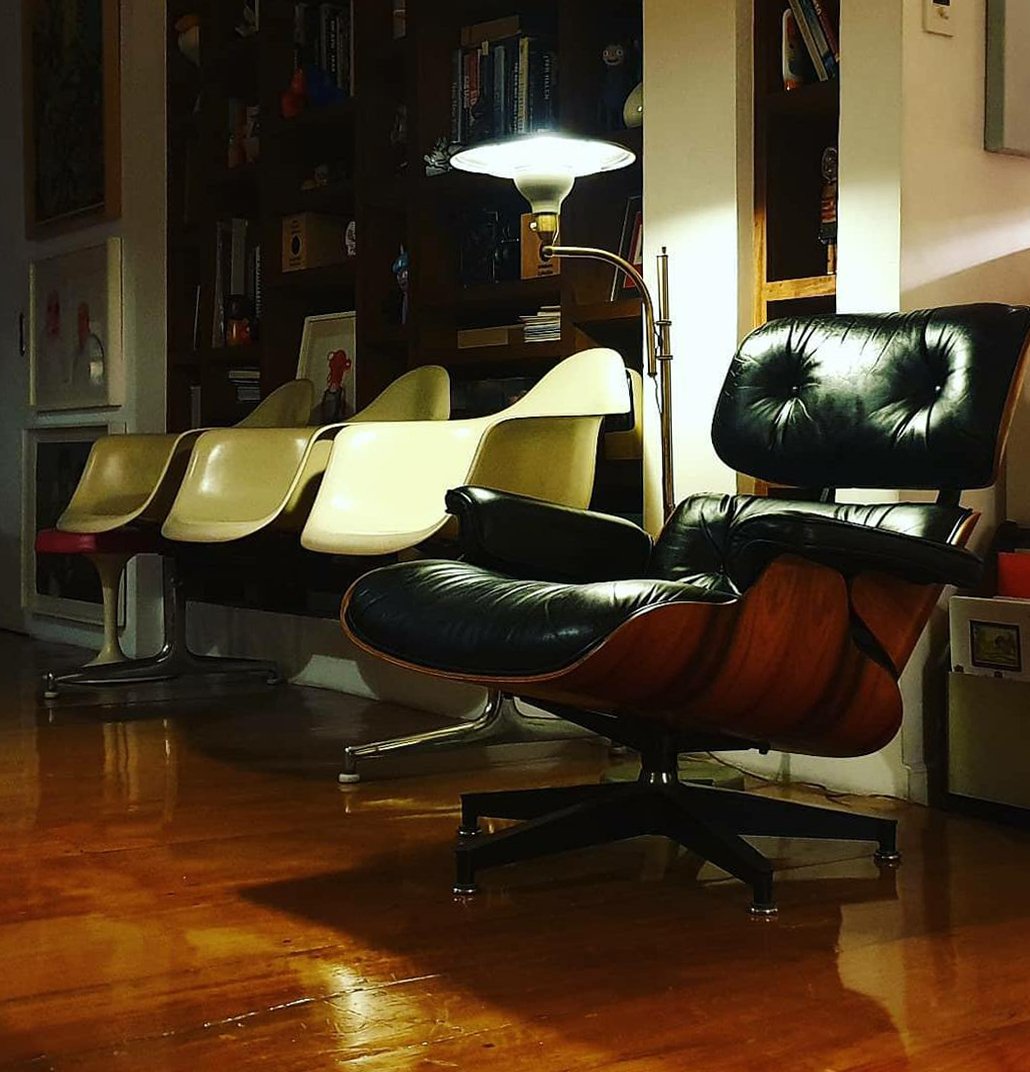
On the Mishuku’s list of pieces they’ll never sell: 60s early Eames Lounge Chair 

An iconic silhouette that has never aged
What informs your selection of pieces to sell? What overarching theme or quality governs the curation of the pieces?
I’m triggered to sell every day, I can’t escape it. It has become part of the daily routine. The beauty of social media is the immediate response and interaction on the posts. Based on the reactions and inquiries, we have a pretty good feel of what most people are interested in. We try to keep up with foreign trends. As collectors, most of the pieces for sale are items we find beautiful and don’t mind keeping.
It is sometimes a pain to let go and sell. Still, in keeping with being a responsible collector, the selling helps me let go of items that may just end up in storage and edit down our collection to only items that are truly useful to us at the time.
Midcentury modern furniture pieces seem to have secured a sizeable following here in the Philippines. Why do you think this is so? What about MCM appeals to our Filipino senses in particular?
Filipinos are stylish and updated with the world’s design trends. It’s not hard to see why design that is popular worldwide also finds its place here. Also, we are quite aspirational—we need to display that we are capable of the same achievements (if not greater) than that of other, more-developed nations.
Plus, Filipinos love to entertain. This is a differentiating factor, I think, from other Asian neighbors. The Filipino often invites guests into their homes, and having a presentable home is important. We want to have pieces or a collection to show our guests who come to visit. Then, add the latest housing and real estate industry boom; many are furnishing their newly turned-over spaces.


Verner Panton Chrome chair 
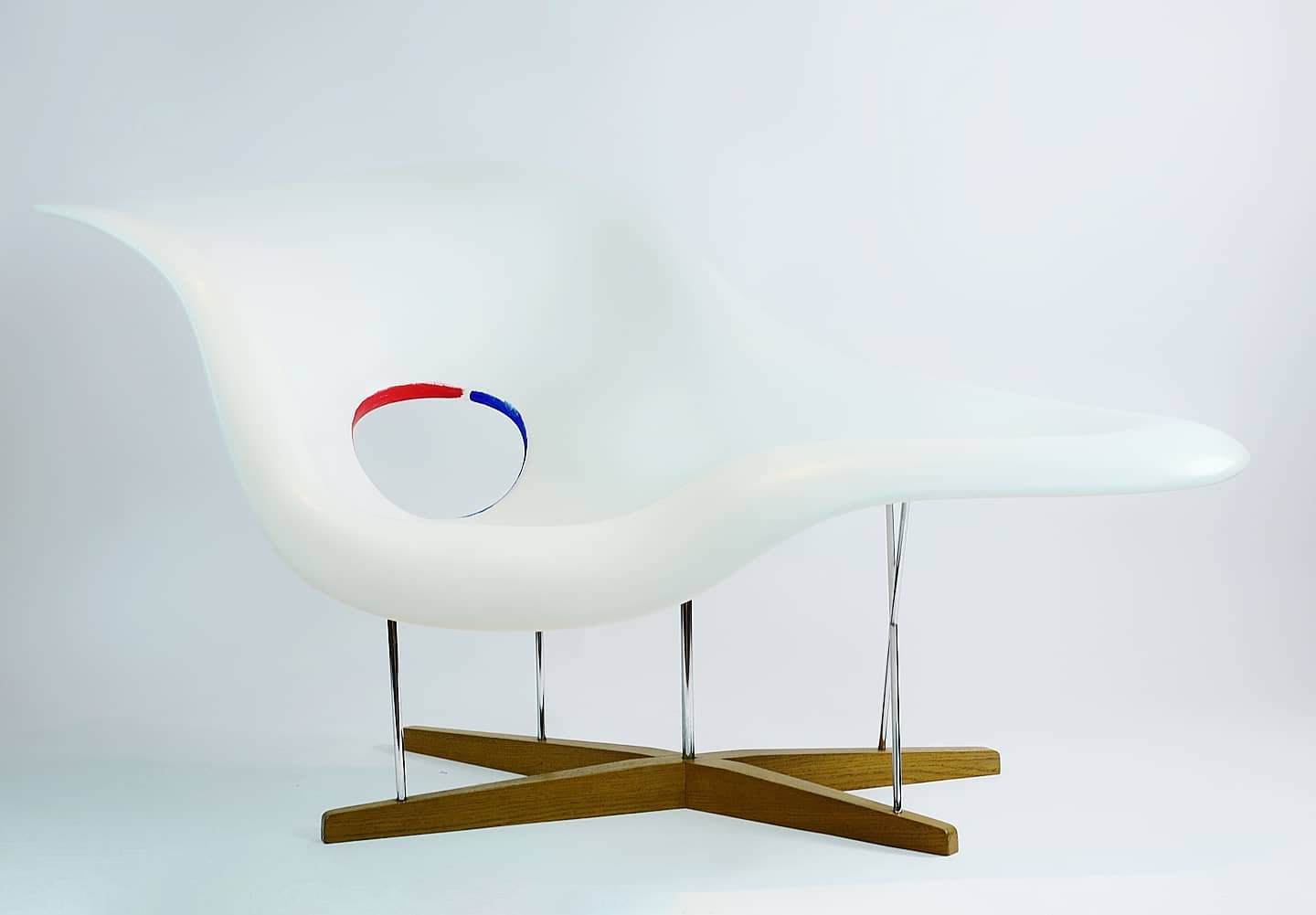
Limited edition Eames La Chaise hand-painted by Gus Albor
How would you compare the vintage pieces of yore to today’s slate of furniture pieces? What has improved? What hasn’t? What got lost, and what was gained?
Advancing technology has brought mass production to a different level. Mainly it fulfills rising demand. However, with it goes some of the character attached to the MCM pieces produced in the 40s, 50s, and 60s. The ones harder to build or made of unique material have been discontinued, while those easier to make are marketed more now.
Although technology has brought about new opportunities for MCM design, some pieces that were only concepts or prototypes in the past are brought to actual fruition today. An example of this would be the Verner Panton Chrome chair that we included in a recent auction. Back then, a chromed cantilever chair was impossible to make. Likewise, the Eames La Chaise only went into production in the 90s as it was much too expensive to manufacture with the methods available to the Eameses in the 1940s.
What are your thoughts on imitations? Do they diminish the value of original pieces?
I advocate against the use of reproductions because it’s an act of disrespect towards the enormous work architects, designers, and companies put into producing these designs. But for those who choose to purchase reproductions for pricing reasons, I do not judge. Instead, I try to educate.
Reproductions may look similar to the originals, but the reason repros cost so much less is the material and make are inferior. Most of the time, they break, and you need to buy again to replace them. However, with originals, you get years and years of use, seen especially in the vintage pieces of the 50s, 60s, and 70s, which, after a little bit of cleaning, still have many years of use left. And yet, after all those years, they retain their value. If you choose to, you can sell them for a much higher price than any repro. That, I believe, is real value for money.
What aspects of restoration do you relish? Which part do you consider most difficult?
The process of restoring a piece to its former glory is always exciting. Sanding down wood is a particular high—you sand down the worn-out wood, apply oil, and reveal the fiery grains below—wow. That is pure joy. The most difficult, I find, in restoration is upholstery—very tricky. Midcentury modern pieces are all about shape. Bad upholstery can alter that and cause them to completely lose their character.

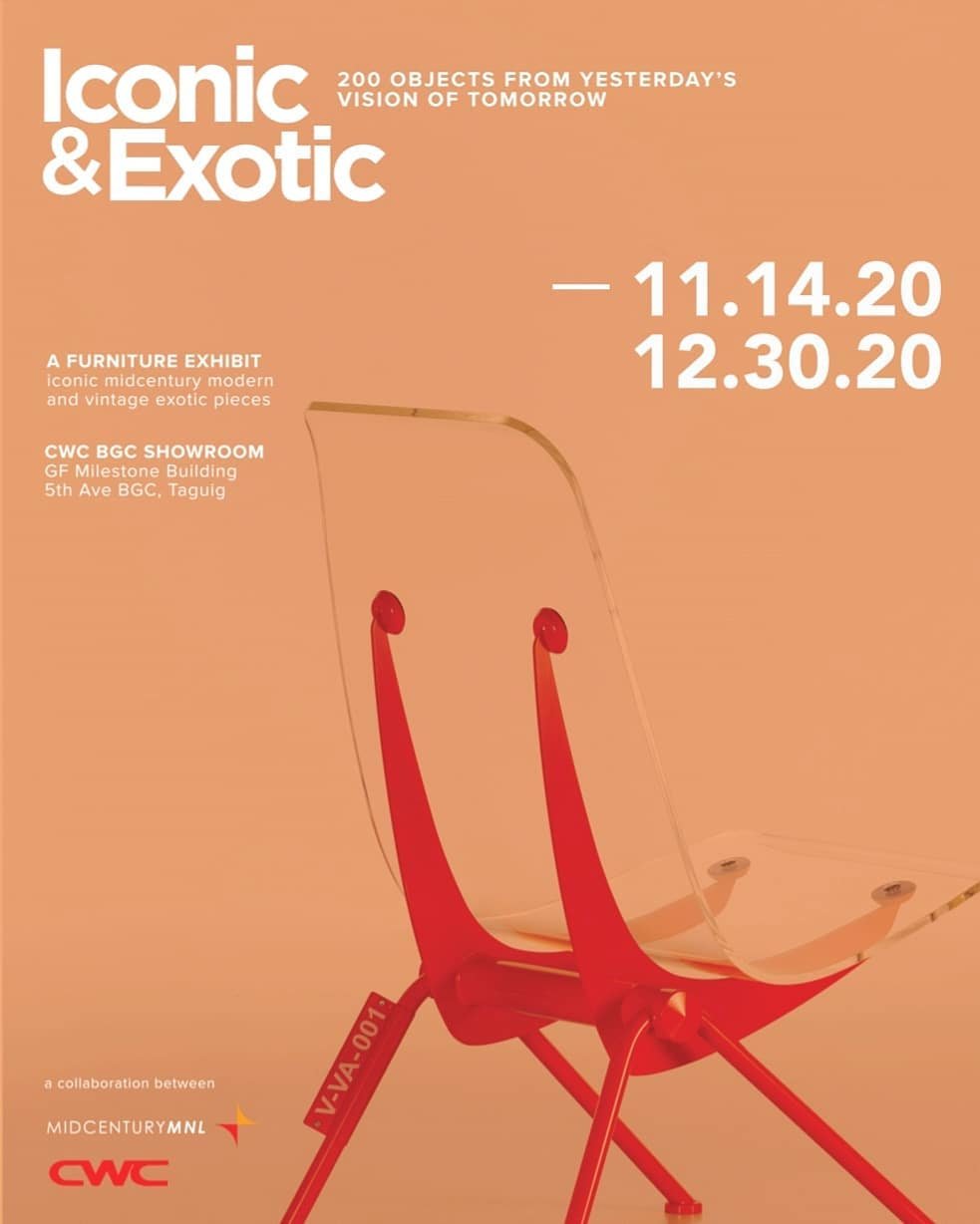
Midcentury Manila collaboration with CWC Interiors 
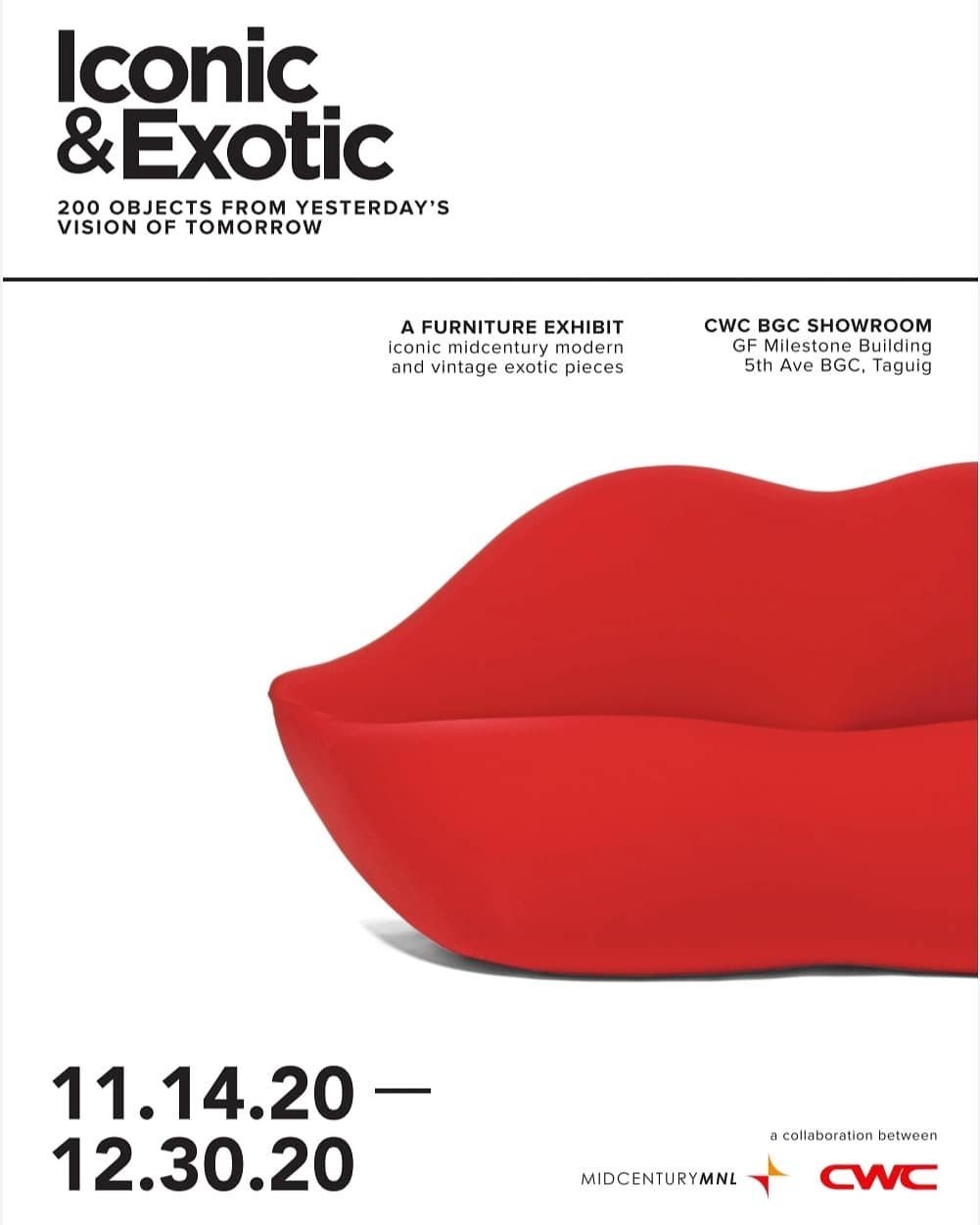


To what extent is a furniture piece still considered original after a restoration job?
In restoration, we make a conscious effort to keep and use all the original parts. However, specialized parts occasionally break, and we need to fabricate or use whatever else is available. In my opinion, the piece’s value is determined by the happiness of its owner and user.
The truth is that not all vintage furniture pieces increase in value, especially those not highly sought after. A good restoration job will make the piece last longer. I would not recommend doing heavy restoration on super rare or first-edition pieces, so it’s important to research before restoring. For the most part, as long as the parts are still intact and the piece was only lightly sanded or cleaned, you can say it is still the original.
What’s the craziest thing you’ve done to obtain a coveted piece?
Oh, we’ve had many chair adventures! One to note was driving an entire day, just the two of us, through unfamiliar territory and some small towns in the US for a vintage Eames wartime splint.


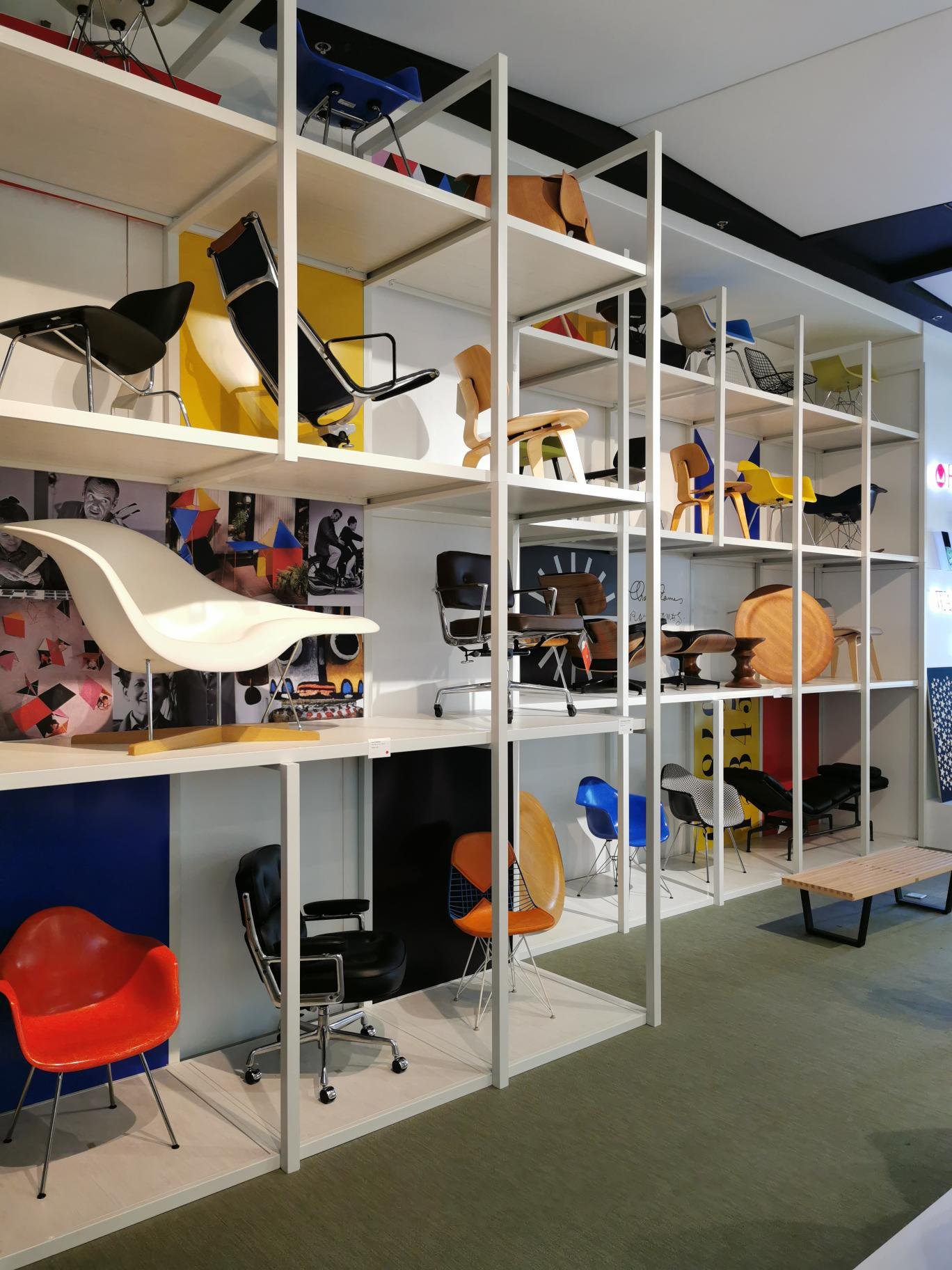



This is our heirloom issue; what quality of midcentury modern pieces would you say have made them into heirloom pieces? What lessons do they teach our designers today about timelessness?
Midcentury modern (MCM) design centers on form, function, and good, honest design. It is all about craftsmanship. Most MCM designers were architects who spent years and years working on a chair to prove structural integrity—they are made to last. You can see this in most MCM pieces, especially in the Danish modern-made items. Even after 70 years of use, they are not wobbly, the wood aged gracefully, and they continue to be sturdy for everyday use. The Danish modern wood pieces would be great heirlooms. Traditional cabinetry and handmade elements are harder to find these days.
Another thing MCM designers valued was longevity. Charles and Ray Eames shared in a documentary that when designing furniture, you must imagine it 50 to 100 years from now. Will the design remain relevant? Will it still match current homes? In designing, we should take it from the Eameses. Up to today, their furniture designs outshine most other pieces, even in the office segment.
We live in a day and age where access to good design can come with a steep price tag. In your opinion, why is it worth the investment? What drives the price of good designer furniture?
It is important to differentiate fads from true designs that work. A well-designed piece will withstand time, use, and wear and, if cared for properly, will hold its value. In the future should you decide to sell, there will still be a person ready and willing to buy it. I think it’s worth paying more for that.


Is there a need to democratize access to good design?
Good design should be accessible to all. Charles and Ray Eames, Frank Gehry, and many other architectural designers wanted to make pieces that were not only sturdy and made of the best materials but, most importantly, available and affordable. One of Eames’ famous lines is “The best, for the most, for the least.” Sadly, we may be oversaturated and accustomed to China-made pieces that have distorted our view of pricing.
But honestly, if we can afford to buy sneakers and designer clothes and accept that these are priced higher than generic ones, then it only follows that good furniture costs more, considering the years and use you get out of it. Sometimes, you just have to get creative in searching for the right piece. Often, a vintage item is priced lower than brand-new designer pieces. If you’re willing to look, there are still good deals.
Would you agree that furniture choices can make or break one’s experience and enjoyment of a space? In your opinion, how did the current pandemic shape the way people look at furniture pieces?
Yes, definitely, I always say this. There is a specific chair for a specific place, for a specific purpose, for a specific use. The joy of the journey to finding the right one is truly the reward. You don’t pay attention to how comfortable a chair should be until you’re forced to sit in it for long hours. It’s only then you realize what you bought does not serve its purpose. People are more discerning now about the items they spend on, and there is an acknowledgment that you truly get what you pay for. Some things are expensive for a reason. For most well-designed furniture, purpose and function are always the first priority. Aesthetic only follows.
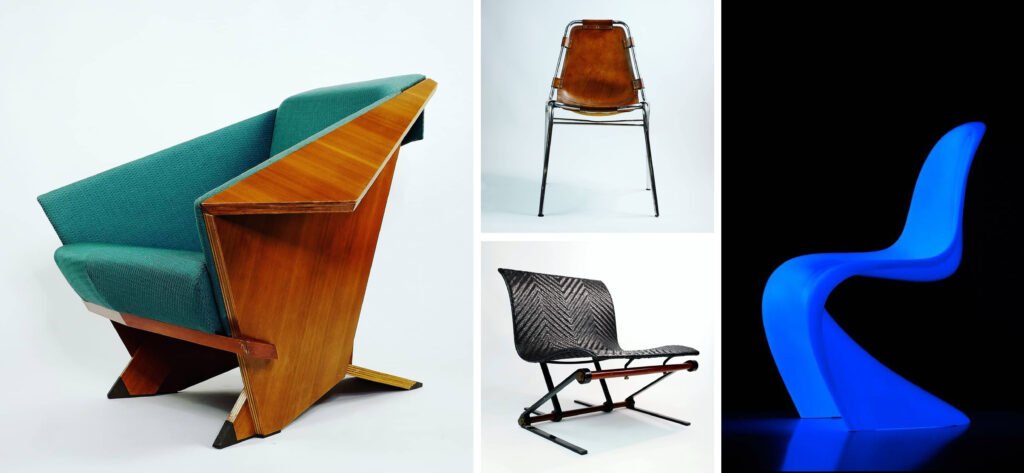

Your Midcentury Manila social media accounts go beyond selling pieces by also taking time to share intel and furniture trivia. What informed the decision to do so? How would you say this helps the craft of furniture-making in general?
To begin with, I’m a furniture collector before I am a seller. So, a large part of why we post is sharing experiences and day-to-day encounters with chairs. This is what makes it fun for me. Mostly searching for items I want for myself, I come across things that I feel are beautiful and deserve a second look. I sell these, some even without profit, mostly to encourage other collectors. So, I have fellow furniture crazies to geek out with!


Not for sale #2: Ron Arad’s Schizzo 

Impossible to just have one of these!
We have a rich furniture-making tradition here in The Philippines. What does it take for local pieces to attain the same level of attention, demand, and ubiquity in furniture collections?
I feel local Filipino designers should stop trying to follow trends outside of market demand and create pieces they have mastered over the years. If we stick to what we are good at—access to good wood, artisans who can carve and weave—or explore what we are really good at, like the Japanese modernists, we can make designs that compete worldwide. Like Cobonpue or Lor Calma. Another fine example would be Emurio, a local favorite.
What advice would you give novice collectors interested in building a furniture ensemble of their own?
First, don’t go all out. Take it slow. The journey of collecting is the most beautiful part. It’s not how fast you acquire the pieces, but the stories that come with collecting add value to each item. Start slowly by first filling a need and replacing a piece that needs replacement. You will find fulfillment in spending if it solves a problem. That’s a perfect place to start. Plus, it’s easier to justify the purchase to the missus (or hubby)! Then you work your way around this first purchase.
Further, in collecting, find a style that suits you best. It does not even have to be mid-century modern. I like MCM personally because it blends nicely with other styles and is the easiest to pair with contemporary art.
A piece that you have that you will never sell?
Oh, there are several, mainly because of the stories attached to them and the memories we have with the piece, like an early edition DAF chair by George Nelson, a first-edition Eames lounge chair, and a Ron Arad Schizzo. •
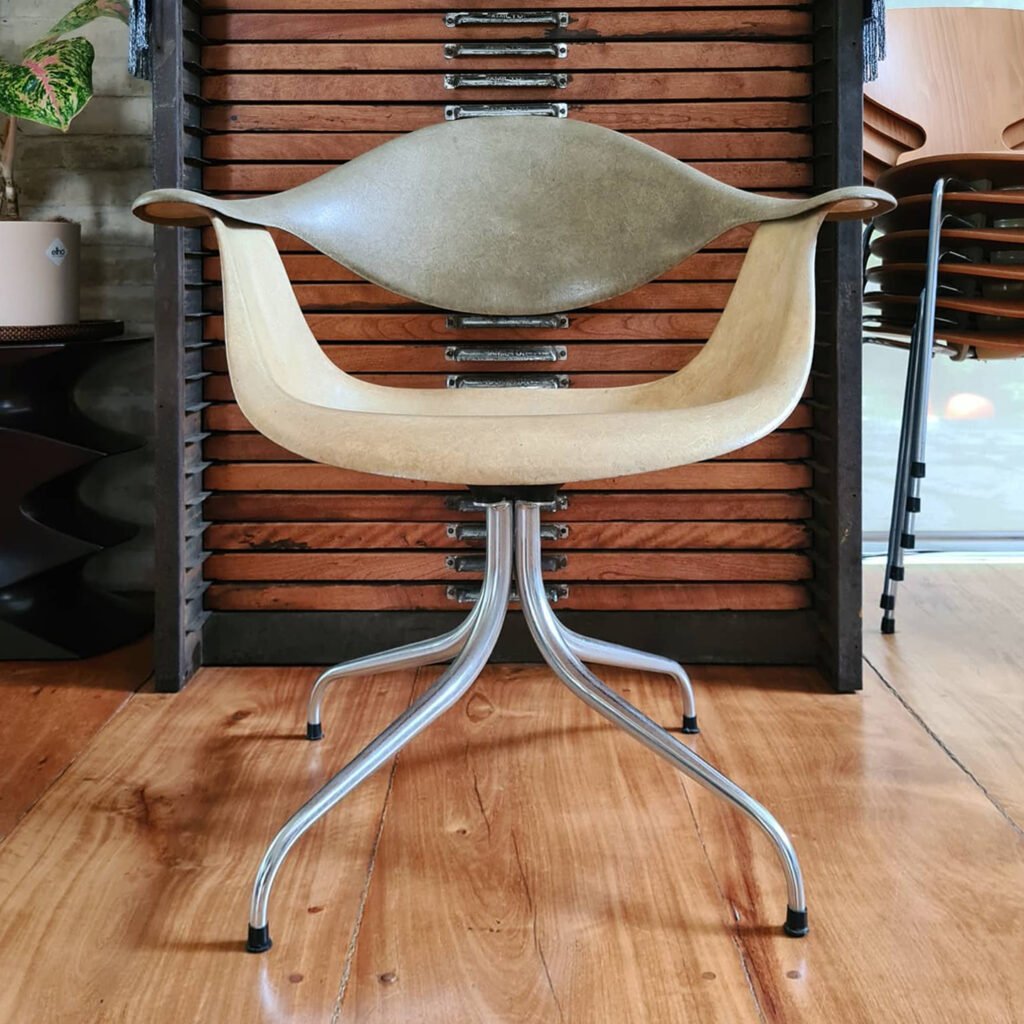

Get your regular dose of midcentury modern furniture goodness at @midcenturymanila on Instagram

